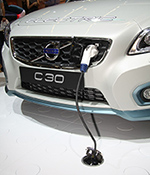 New generations of energy-hungry electronic devices, such as digital cameras, phones, portable computing devices, and automobiles demand high performance batteries.
New generations of energy-hungry electronic devices, such as digital cameras, phones, portable computing devices, and automobiles demand high performance batteries.
NanoArc® products including Zinc Oxide, Bismuth Oxide, and Cerium Oxide function in a variety of capacities. Each of these products offers a variety of attributes that add value to Lithium-Ion and Lithium Primary Battery applications.
Using nano metal oxides in zinc anode based cells improves the operating efficiency, enabling longer use life as well as potentially reducing the overall cost of the battery. The performance enhancement seen, particularly under high discharge rates, offers exciting possibilities for both primary and secondary batteries. Potential uses for nano metal oxides in Lithium-Ion cells include stability enhancing additives in high voltage cathodes, ceramic doped membranes, exterior coatings on separators, precursors to synthesis of cathode material, and components of the hermetic seals.
 Solar control films and interlayers are able to reduce the amount of solar energy (UV radiation, visible light and infrared heat) entering the room by increasing the solar reflection and solar absorption of the glass, improving the comfort in homes and automobiles without sacrificing visibility.
Solar control films and interlayers are able to reduce the amount of solar energy (UV radiation, visible light and infrared heat) entering the room by increasing the solar reflection and solar absorption of the glass, improving the comfort in homes and automobiles without sacrificing visibility.
Nanophase manufacturers a variety of nanoparticle dispersions for thin, transparent coatings on solar films to reduce heat gain, block UV radiation, and moderate the amount of visible light and glare entering the room.
NanoShield® Antimony Tin Oxide (ATO) rejects heat producing infrared rays, maintaining the temperature of a building or residence. Unlike older forms of tint, ATO offers a clear, natural view.
NanoShield® Zinc Oxide in coated films reduces damaging effects by blocking harmful UV rays and shielding the car, home and office from ultraviolet radiation. New to the company’s family of infrared absorbers, NanoShield Cesium Tungtate provides an exceptional combination of infrared absorption and visible light transmission which can match the performance of more expensive sputtered films, without blocking radio or cellular signals.